Related Research Articles
The Academy Award for Best Production Design recognizes achievement for art direction in film. The category's original name was Best Art Direction, but was changed to its current name in 2012 for the 85th Academy Awards. This change resulted from the Art Directors' branch of the Academy of Motion Picture Arts and Sciences (AMPAS) being renamed the Designers' branch. Since 1947, the award is shared with the set decorators. It is awarded to the best interior design in a film.

The Academy of Motion Picture Arts and Sciences is a professional honorary organization in the United States of America with the stated goal of advancing the arts and sciences of motion pictures. The Academy's corporate management and general policies are overseen by a board of governors, which includes representatives from each of the craft branches.

The Academy Award for Best Supporting Actress is an award presented annually by the Academy of Motion Picture Arts and Sciences (AMPAS). It honors an actress who has delivered an outstanding performance in a supporting role while working within the film industry. The award is traditionally presented by the previous year's Best Supporting Actor winner.
The Academy Honorary Award – instituted in 1950 for the 23rd Academy Awards – is given annually by the Board of Governors of the Academy of Motion Picture Arts and Sciences (AMPAS). Since 2009, it has been presented at the separate annual Governors Awards rather than at the regular Academy Awards ceremony. The Honorary Award celebrates motion picture achievements that are not covered by existing Academy Awards, although prior winners of competitive Academy Awards are not excluded from receiving the award.
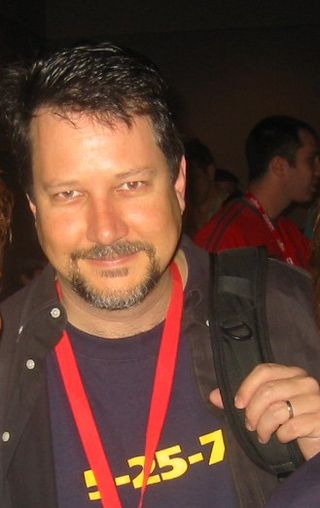
John Knoll is an American visual effects supervisor and chief creative officer (CCO) at Industrial Light & Magic (ILM). One of the original creators of Adobe Photoshop, he has also worked as visual effects supervisor on the Star Wars prequels and the 1997 special editions of the original trilogy. He also served as ILM's visual effects supervisor for Star Trek Generations and Star Trek: First Contact, as well as the Pirates of the Caribbean series. Along with Hal Hickel, Charles Gibson and Allen Hall, Knoll and the trio's work on Pirates of the Caribbean: Dead Man's Chest earned them the Academy Award for Best Visual Effects.
The Scientific and Technical Awards are three different Honorary Awards that are given by the Academy of Motion Picture Arts and Sciences (AMPAS) during the annual Academy Awards season. The Awards have been presented since the 4th Academy Awards in November 1931, to recognize original developments resulting in significant improvements in motion picture production and exhibition. The Awards are presented at a formal dinner ceremony a couple weeks before the principal Academy Awards ceremony.
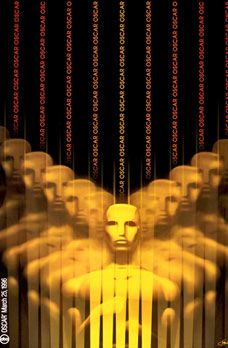
The 68th Academy Awards ceremony, organized by the Academy of Motion Picture Arts and Sciences (AMPAS), honored the best films of 1995 in the United States and took place on March 25, 1996, at the Dorothy Chandler Pavilion in Los Angeles beginning at 6:00 p.m. PST / 9:00 p.m. EST. During the ceremony, AMPAS presented Academy Awards in 24 categories. The ceremony, televised in the United States by ABC, was produced by David Salzman and Quincy Jones and directed by Jeff Margolis. Actress Whoopi Goldberg hosted the show for the second time, having previously presided over the 66th ceremony in 1994. Three weeks earlier, in a ceremony held at the Regent Beverly Wilshire Hotel in Beverly Hills, California, on March 2, the Academy Awards for Technical Achievement were presented by host Richard Dreyfuss.
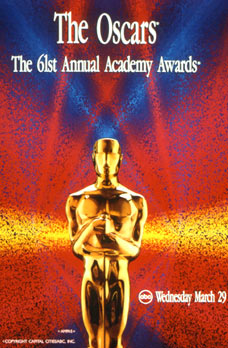
The 61st Academy Awards ceremony, organized by the Academy of Motion Picture Arts and Sciences (AMPAS), honored the best films of 1988, and took place on Wednesday, March 29, 1989, at the Shrine Auditorium in Los Angeles, beginning at 6:00 p.m. PST / 9:00 p.m. EST. During the ceremony, AMPAS presented Academy Awards in 23 categories. The ceremony, televised in the United States by ABC, was produced by Allan Carr and directed by Jeff Margolis. Ten days earlier, in a ceremony held at the Beverly Hills Hotel in Beverly Hills, California, the Academy Awards for Technical Achievement were presented by host Angie Dickinson.
Cospective Pty Ltd, formerly Rising Sun Research, is an Australian software firm located in Adelaide, South Australia. It is the Australian arm of the international ftrack organisation.

The 51st Academy Awards ceremony, organized by the Academy of Motion Picture Arts and Sciences (AMPAS), honored films released in 1978 and took place on April 9, 1979, at the Dorothy Chandler Pavilion in Los Angeles beginning at 7:00 p.m. PST / 10:00 p.m. EST. During the ceremony, AMPAS presented Academy Awards in 23 categories. The ceremony, televised in the United States by ABC, was produced by Jack Haley Jr. and directed by Marty Pasetta. Comedian and talk show host Johnny Carson hosted the show for the first time. Three days earlier in a ceremony held at The Beverly Hilton in Beverly Hills, California, the Academy Awards for Technical Achievement were presented by hosts Gregory Peck and Christopher Reeve.
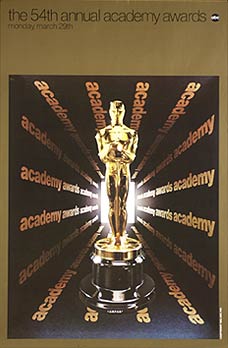
The 54th Academy Awards ceremony, organized by the Academy of Motion Picture Arts and Sciences (AMPAS), honored films released in 1981 and took place on March 29, 1982, at the Dorothy Chandler Pavilion in Los Angeles beginning at 6:00 p.m. PST / 9:00 p.m. EST. During the ceremony, AMPAS presented Academy Awards in 22 categories. The ceremony, televised in the United States by ABC, was produced by Howard W. Koch and directed by Marty Pasetta. Comedian and talk show host Johnny Carson hosted the show for the fourth consecutive time. One week earlier, in a ceremony held at The Beverly Hilton in Beverly Hills, California, on March 21, the Academy Scientific and Technical Awards were presented by hosts Lloyd Bridges and Fay Kanin.
Spirit DataCine is a telecine and a motion picture film scanner. This device is able to transfer 16mm and 35mm motion picture film to NTSC or PAL television standards or one of many High-definition television standards. With the data transfer option a Spirit DataCine can output DPX data files. The image pick up device is a solid state charge-coupled device. This eliminated the need for glass vacuum tube CRTs used on older telecines. The units can transfer negative film, primetime, intermediate film and print film, stock. One option is a Super 8 gate for the transfer of Super 8 mm film. With a sound pick up option, optical 16mm and 35mm sound can be reproduced, also 16mm magnetic strip sound. The unit can operate stand alone or be controlled by a scene by scene color corrector. Ken Burns created The Civil War, a short documentary film included in the DVD release, on how he used the Spirit DataCine to transfer and remaster this film. The operator of the unit is called a Colorist or Colorist Assistant. The Spirit DataCine has become the standard for high-end real-time film transfer and scanning. Over 370 units are used in post-production facilities around the world. Most current film productions are transferred on Spirit DataCines for Television, Digital television, Cable television, Satellite television, Direct-to-video, DVD, Blu-ray Disc, pay-per-view, In-flight entertainment, Stock footage, Dailies, Film preservation, digital intermediate and digital cinema. The Spirit DataCine is made by DFT Digital Film Technology GmbH in Darmstadt, Germany.
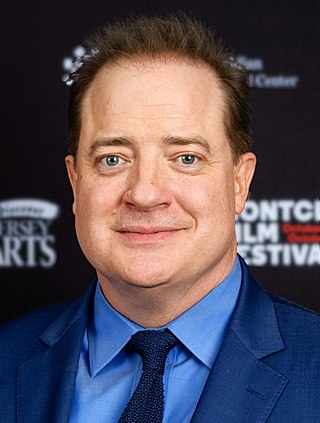
The Academy Award for Best Actor is an award presented annually by the Academy of Motion Picture Arts and Sciences (AMPAS). It is given to an actor who has delivered an outstanding performance in a leading role in a film released that year. The award is traditionally presented by the previous year's Best Actress winner.

The Academy Award For Best Actress is an award presented annually by the Academy of Motion Picture Arts and Sciences (AMPAS). It is given to an actress who has delivered an outstanding performance in a leading role in a film released that year. The award is traditionally presented by the previous year's Best Actor winner.

The Academy Award for Best Supporting Actor is an award presented annually by the Academy of Motion Picture Arts and Sciences (AMPAS). It is given in honor of an actor who has delivered an outstanding performance in a supporting role while working within the film industry. The award is traditionally presented by the previous year's Best Supporting Actress winner.
George Watters II is an American retired sound editor with more than 80 feature film credits. He has won the Academy Award for Best Sound Editing twice, for The Hunt for Red October (1990) and for Pearl Harbor (2001).
Ben Snow is a special effects artist who has been nominated four times at the Academy Awards. He works at Industrial Light & Magic.
References
- ↑ "cineSync v1.0 launched". Rising Sun Research. 31 October 2005. Archived from the original on 2006-11-04.
- ↑ "Special Effects: 'War Of The Worlds'". Post Magazine. 1 July 2005.
- ↑ "2010 Scientific and Technical Awards". Academy of Motion Picture Arts and Sciences (AMPAS). 12 February 2011.